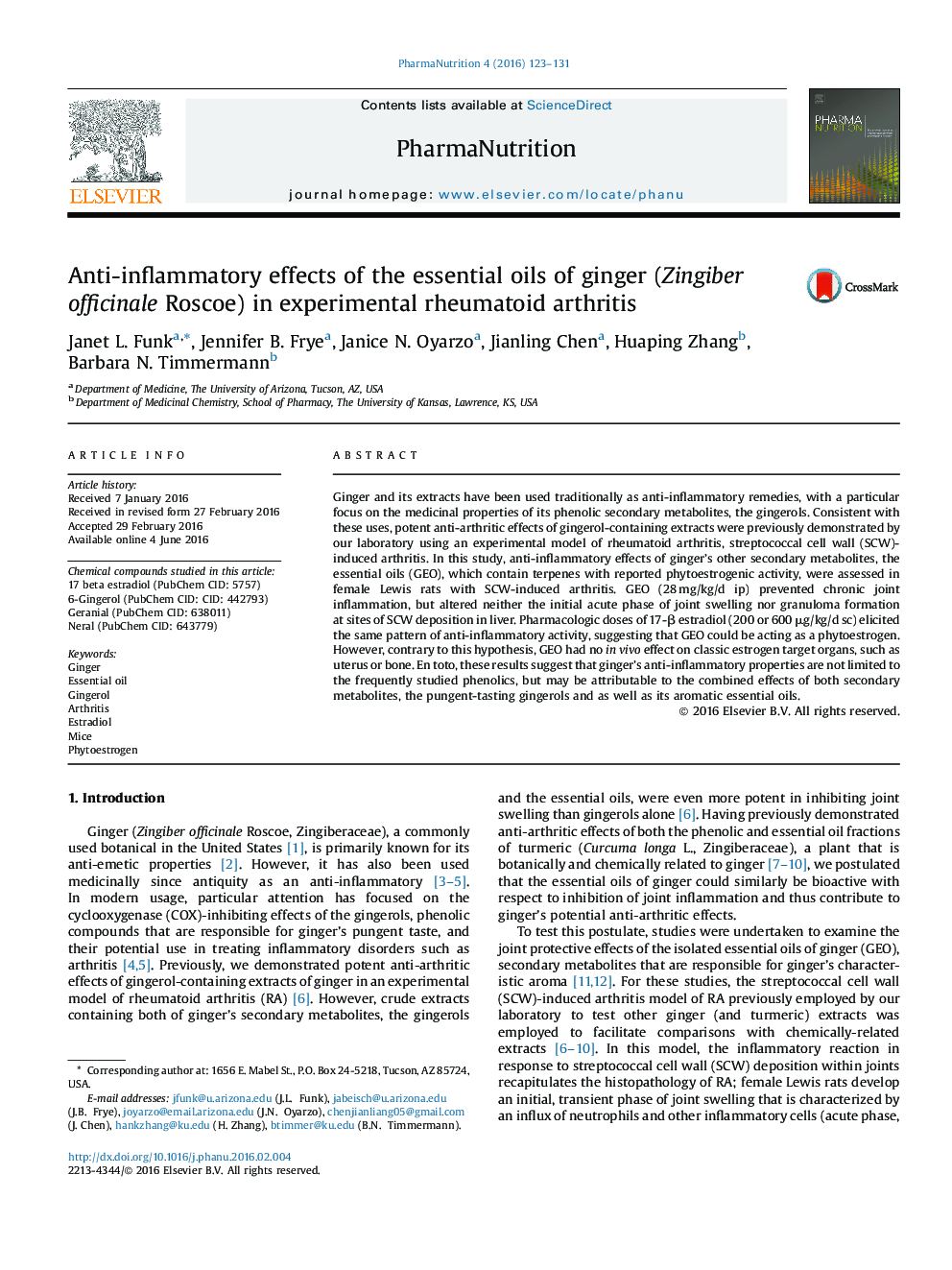| کد مقاله | کد نشریه | سال انتشار | مقاله انگلیسی | نسخه تمام متن |
|---|---|---|---|---|
| 2564393 | 1403187 | 2016 | 9 صفحه PDF | دانلود رایگان |
• While anti-inflammatory effects of ginger are often attributed to its gingerols, each of its secondary metabolites, the essential oils and the gingerols, are joint protective in an experimental arthritis model.
• Both of ginger’s secondary metabolites (essential oils and gingerols) have anti-arthritic effects in an experimental model.
• Anti-arthritic effects of ginger essential oils (GEO) mirrored those of 17-β estradiol.
• However, GEO had no effect on classic estrogen-responsive organs.
• GEO were well tolerated.
• GEO and gingerols may have additive joint protective effects in arthritis.
Ginger and its extracts have been used traditionally as anti-inflammatory remedies, with a particular focus on the medicinal properties of its phenolic secondary metabolites, the gingerols. Consistent with these uses, potent anti-arthritic effects of gingerol-containing extracts were previously demonstrated by our laboratory using an experimental model of rheumatoid arthritis, streptococcal cell wall (SCW)-induced arthritis. In this study, anti-inflammatory effects of ginger’s other secondary metabolites, the essential oils (GEO), which contain terpenes with reported phytoestrogenic activity, were assessed in female Lewis rats with SCW-induced arthritis. GEO (28 mg/kg/d ip) prevented chronic joint inflammation, but altered neither the initial acute phase of joint swelling nor granuloma formation at sites of SCW deposition in liver. Pharmacologic doses of 17-β estradiol (200 or 600 μg/kg/d sc) elicited the same pattern of anti-inflammatory activity, suggesting that GEO could be acting as a phytoestrogen. However, contrary to this hypothesis, GEO had no in vivo effect on classic estrogen target organs, such as uterus or bone. En toto, these results suggest that ginger’s anti-inflammatory properties are not limited to the frequently studied phenolics, but may be attributable to the combined effects of both secondary metabolites, the pungent-tasting gingerols and as well as its aromatic essential oils.
Figure optionsDownload as PowerPoint slide
Journal: PharmaNutrition - Volume 4, Issue 3, July 2016, Pages 123–131
